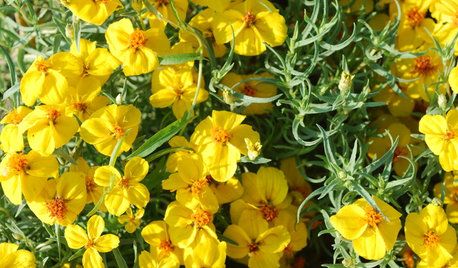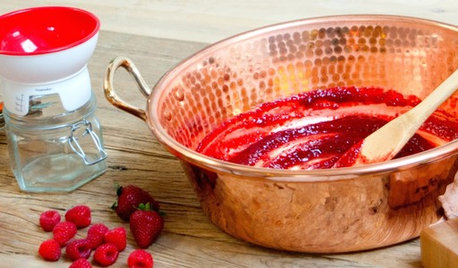Saving Seeds of Zinnias
Okiedawn OK Zone 7
16 years ago
Related Stories

CONTAINER GARDENS8 Easy Container Plants to Grow From Seed
Get beautiful blooms and herbs in summer by starting these choice garden picks from seed in spring
Full Story
GARDENING GUIDESGreat Design Plant: Rocky Mountain Zinnia Brightens Hot, Dry Spots
Sunshiny flowers provide a showy drift of color in desert and prairie gardens — this native perennial is hardier than it looks
Full Story
GARDENING GUIDESHow to Plant a New Lawn From Seed
Choose from more grass varieties and save money over sod by starting your lawn from seed
Full Story
LANDSCAPE DESIGNGet Along With Less Lawn — Ideas to Save Water and Effort
Ditch the mower and lower your water bill while creating a feast for the eyes with diverse plantings and gathering places
Full Story
MOST POPULARSummer Crops: How to Grow Sunflowers
Savor snack-tastic sunflower seeds once the radiant blooms have faded — if the birds have saved you any, that is
Full Story
LIFEThe Top 5 Ways to Save Water at Home
Get on the fast track to preserving a valuable resource and saving money too with these smart, effective strategies
Full Story
GARDENING GUIDES8 Unthirsty Plants Help You Save Water in Style
Spend less effort and money on your landscape with drought-tolerant and native plants that liven up your yard
Full Story
SHOP HOUZZHouzz Products: Save a Taste of Summer
Can't bear to part with the flavors of summer peaches, berries and tomatoes? Then jam on it!
Full Story
SAVING WATERHouzz Call: Are You Letting Go of Your Lawn?
Many facing a drought are swapping turf for less thirsty plantings. If you’re one of them, we’d like to hear about it
Full StorySponsored
More Discussions








Macmex
Okiedawn OK Zone 7Original Author
Related Professionals
Allen Landscape Architects & Landscape Designers · Palm Springs Landscape Architects & Landscape Designers · Saint Charles Landscape Architects & Landscape Designers · Garden City Landscape Architects & Landscape Designers · Avocado Heights Landscape Contractors · Andover Landscape Contractors · Huntington Landscape Contractors · Lorain Landscape Contractors · Oak Forest Landscape Contractors · Webster Groves Landscape Contractors · Baton Rouge Decks, Patios & Outdoor Enclosures · Chicago Decks, Patios & Outdoor Enclosures · Fort Pierce Decks, Patios & Outdoor Enclosures · King of Prussia Decks, Patios & Outdoor Enclosures · Northbrook Decks, Patios & Outdoor Enclosuresokmike
Maryl (Okla. Zone 7a)
Okiedawn OK Zone 7Original Author
susanlynne48
Okiedawn OK Zone 7Original Author
mulberryknob
Okiedawn OK Zone 7Original Author
Maryl (Okla. Zone 7a)
Macmex
Okiedawn OK Zone 7Original Author
susanlynne48
Okiedawn OK Zone 7Original Author
Macmex
Okiedawn OK Zone 7Original Author
Lisa_H OK
Okiedawn OK Zone 7Original Author
susanlynne48
Okiedawn OK Zone 7Original Author
susanlynne48
ozlifter
Maryl (Okla. Zone 7a)
Okiedawn OK Zone 7Original Author
legacy77a
pattyokie
Okiedawn OK Zone 7Original Author
legacy77a
Pat